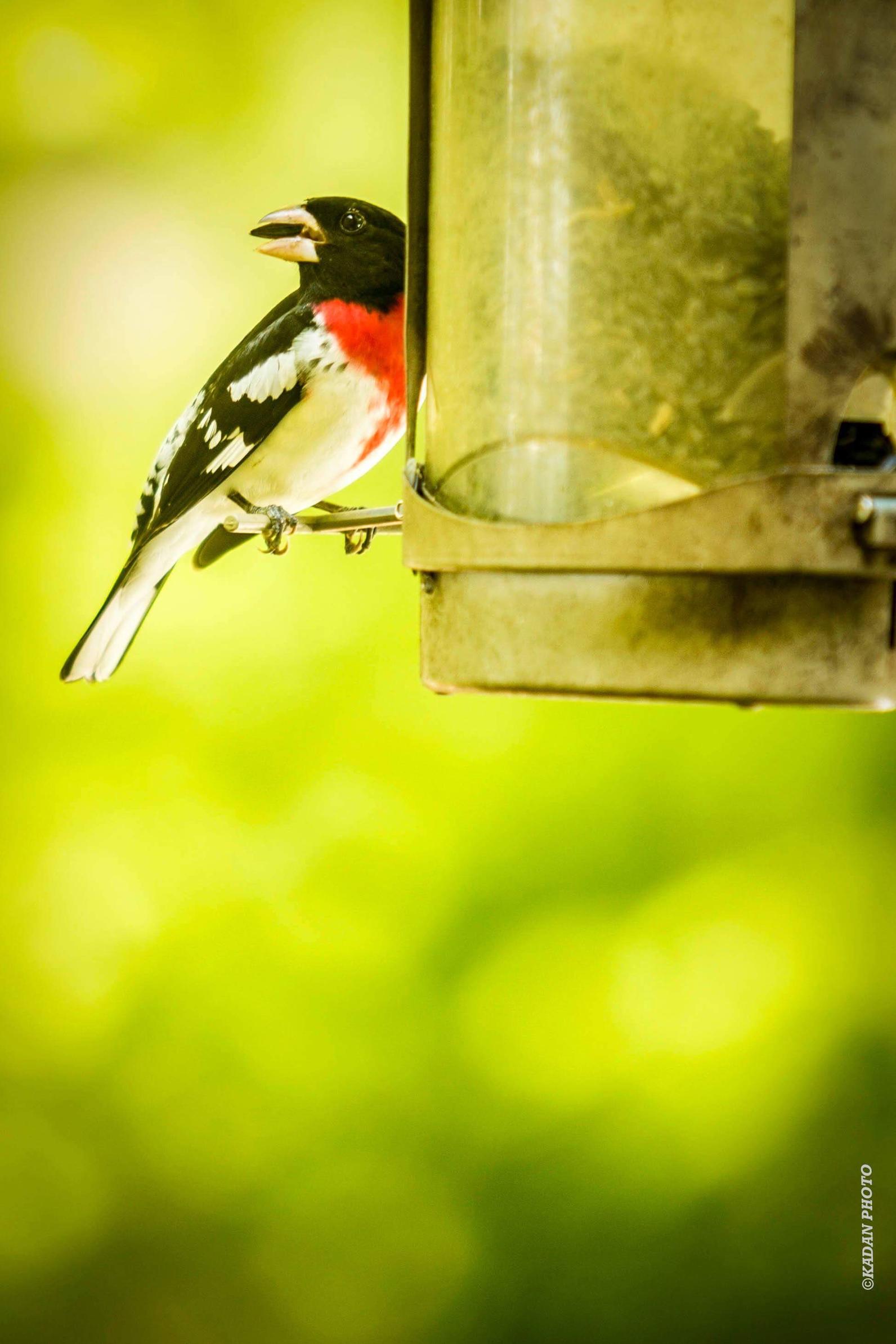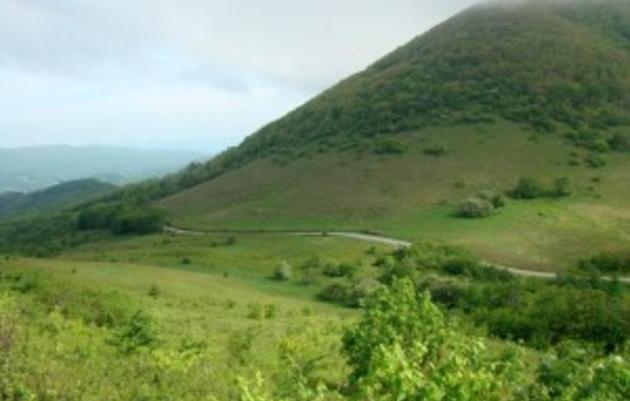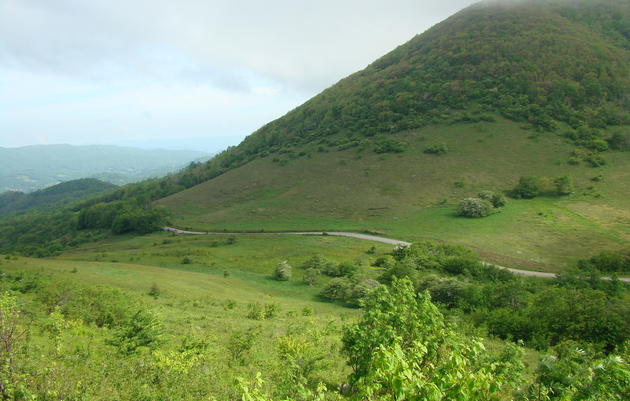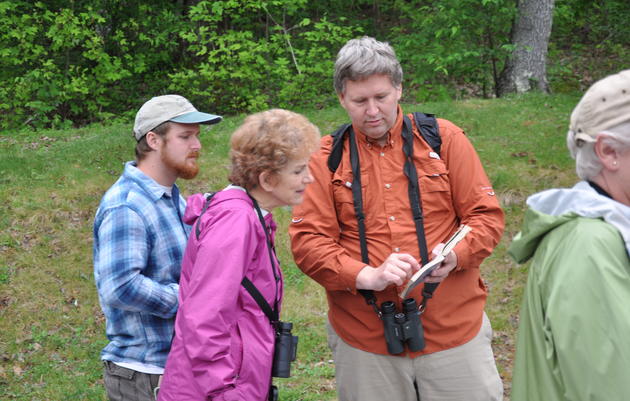Although Rose-breasted Grosbeaks tend to stay out of sight, you’re likely to hear their melodious song amongst the treetops in the high mountains of western North Carolina on a summer day.
They are medium in size (about the size of a cardinal), and carry within them a song so lovely it is described as an American Robin that has had voice lessons. Its distinctive call is a sharp, penetrating eek-eek that reminds us of tennis shoes on a gym floor.
In looking to pursue a courtship, a male bird may partly spread its wings and tail, draw its head back, and approach a female bird all while singing!
Learn where to find them, how to help them, and more in this Priority Bird Profile: Rose-breasted Grosbeak.
Why Does This Bird Matter?

Although the Rose-breasted Grosbeak is not currently endangered, it is vulnerable to loss of habitat due to development and other activities that fragment the forests on which it depends. This species’ typical habitat consists of deciduous woods, usually northern hardwood forests of beech, birch and sugar maple in western North Carolina, and it feeds mostly off insects, seeds and berries.
It is one of about a dozen “priority species” that the National Audubon Society’s Healthy Forest initiative has chosen to help through active forest protection and management. As host to the southernmost breeding populations, North Carolina has a responsibility to steward the forests in which grosbeaks live and to maintain the genetic diversity that results.
Where to Find Them in North Carolina
SPRING & SUMMER
Red-breasted Grosbeak arrive from their wintering ranges (Panama to South America) around mid-April. Although recent reports indicate occasional June sightings in the Piedmont, they reach the southernmost limit of their breeding range in the western part of the state.
They prefer wooded areas with small patches of young forest scattered throughout in our northern hardwood forests and so are most often found above 3500 feet in elevation here where those forests occur. They can also be spotted at the occasional sunflower feeder during migration!
Those in the mountains, or those willing to travel to view this bird should visit the Amphibolite Mountains IBA, Nantahala National Forest, Plott Balsam and Great Balsam Mountains, Highlands Plateau, and Slick Rock Wilderness during this time.

FALL & WINTER
In the fall, Rose-breasted Grosbeak move south through North Carolina, with peak migration occurring in early October. Like other birds, they tend to use shrub thickets for food and cover when they rest along their migratory route. They winter in mid to high-elevation forests across central America and northern South America, so spotting them from early November – mid-April is unlikely for North Carolina residents.
What Can Landowners Do to Support this Bird?
Rose-breasted Grosbeaks require forests and a safe and secure habitat during nesting and migration seasons.
Here are some ways landowners can help the Rose-breasted Grosbeak, as well as other local birds:
-
Increase the complexity of your woods with layers from the ground to the canopy above
-
Create small openings in the forest: Girdle single trees, or selectively harvest a tree or two for firewood
-
Diversify tree and shrub species: Provide bird-friendly native shrubs that produce fall fruit in both your yards and forests like viburnams, spicebush, and hawthorns.
-
Keep out invasive plant species that reduce the amount of food available during the nesting season like Oriental Bittersweet and Autumn Olive.
-
Report sightings to eBird to help biologists understand and steward the places Rose-breasted Grosbeak prefer in North Carolina for both nest site selection and migratory corridors
What is Audubon Doing to Support this Bird?
Audubon North Carolina works to educate the community about what people can do to help prevent threats to and provide good habitat for birds.

Through our Working Lands program, we collaborate with local landowners, land managers, government and private agencies to restore forest habitats for priority bird species. Rose-breasted Grosbeak are common on the sites we help landowners manage for Golden-winged Warblers, so by participating in this program you can help multiple species.
Take a look at our Program Impact Map to see if you live in a Forest Landbird Legacy Program area – you may be eligible for financial and technical assistance!






